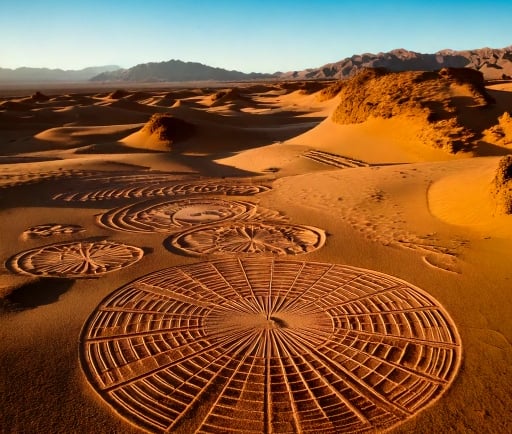Steppe Geoglyphs: Earthworks of the Turgai Trough


Introduction to Steppe Geoglyphs
The steppe geoglyphs, a remarkable collection of large earthworks, showcase human ingenuity in landscape manipulation. Located in the Turgai Trough area, these structures are estimated to number around 260. Each geoglyph consists of intricate arrangements such as mounds, trenches, and ramparts, skillfully piled to create geometric shapes. The most recognizable patterns include circles, squares, crosses, and a distinctive three-pronged swastika-like design. This exploration unveils the significance and allure of these monumental constructions.
Characteristics and Construction
Stretching from approximately 90 meters to over 400 meters in diameter, steppe geoglyphs can only be appreciated from high altitudes, primarily through satellite imagery. Their sheer size and geometric precision render them one of the most fascinating examples of ancient earthworks in modern archaeology. Built using a combination of earth, stones, and timber, these positive geoglyphs reflect the labor and skill of the people who crafted them. The diverse architectural attributes necessitate deep insight into the techniques and cultural intentions of their creators.
Significance and Preservation
Steppe geoglyphs hold profound cultural and historical significance, representing a link to the past that continues to intrigue scholars and visitors alike. Their geometric forms may have held ritualistic or astronomical importance, suggesting that they were more than mere art—possibly serving as markers or ceremonial sites. As such vast reserves of history, it is imperative to sustain these sites against environmental threats. Continuous efforts must be directed towards their preservation, ensuring that future generations have the opportunity to explore and learn from these extraordinary earthworks.
